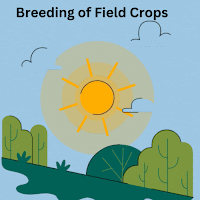Robotics-assisted Phenomics tools
Author: Prashant B. Kale (Ph.D.)
Phenomics,
the study of an organism's physical and biochemical traits, plays a crucial
role in crop improvement by providing valuable insights into plant
characteristics and responses. Plant
phenomics research is at the forefront of modern science, driven by advanced
technologies like robotics, imaging systems, and machine learning. It enables
the rapid collection of vast datasets on plant traits and their responses to
environmental factors, facilitating precise agriculture, genetic analysis, and
the conservation of biodiversity. By integrating genomics and non-invasive
imaging, it accelerates crop improvement efforts, addressing global challenges
like food security and climate change adaptation. This interdisciplinary field
continues to evolve with emerging technologies, making it pivotal for
sustainable agriculture and environmental science. Here are some applications
of phenomics in crop improvement:
1. Identification of Desirable Traits: Phenomics helps identify and quantify desirable traits in crops, such as yield, drought tolerance, disease resistance, and nutritional content. This information guides breeders in selecting the best parent plants for crossing.










